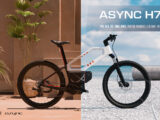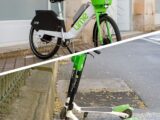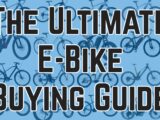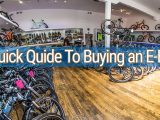
3 Mistakes to Avoid When Buying an E-Bike
December 18, 2022If you love the idea of a fast commute that’s better for the environment, then an electric bike seems like the perfect option. Not only do they look amazing but they can also power up hills and eat wind resistance for breakfast. The motor does all the heavy lifting, all you have to do is pedal a bit, relax and speed on over to your destination. There’s just one problem, where do you start?
There are thousands of articles online, not to mention dozens of local bike stores just a few miles from you, that will all tell you something different about e-bikes. Then, there’s the fact that there are thousands of models, hundreds of brands and dozens of customisations that make up each e-bike. And if you make a bad decision, it’s an expensive mistake. Even an average bike with a quality frame, functional brakes, suspension and other basic components is expensive. So, how do you avoid making a mistake with your purchase?
In this article, we’ve collected the top three mistakes to avoid before you make your electric bike purchase.
1. Not Knowing Your Playground
Every e-bike is designed for a different type of person and a different purpose. The first thing you have to determine is what is most important to you and where you’ll be riding your bike the most often. Just like with a regular bike, there are options for cargo hauling, cruising, trail riding, kid-hauling, downhill, mountain biking, road biking, sand and snow, travelling and urban commuting. The key is figuring out what you need for the playground you will be riding in.
Don’t make the mistake of choosing your new electric bike based on an attractive frame style. What it looks like is far less important than what it does. Each bike comes with different capabilities, tires, motors, breaks, and more depending on how it will be used. This also includes knowing your daily distance. For example, if your commute involves a long hill, you don’t want your power to run out of juice halfway up. Or, if you’re going to do twenty miles of commuting every day, you probably don’t want a bike that only has a twenty-mile range.
2. Forgetting to Test Ride
Bike fit is beyond important. An uncomfortable seat, incorrectly spaced handlebars, and even pedal placement can make a huge difference in your comfort. You also need to consider how each bike performs and handles. For example, you might really enjoy a lot of power when you throttle, or you might prefer a pedal-assist bike with a torque sensor that combines your pedal power with electric power.
The key is to test as many e-bikes as you can so that you get an idea about what suits you best. You need to know if the bike can climb hills the way you need it to, help you carry your gear and perform all the functions you want with a quality that you like.
3. Buying Cheap Components
A good quality low-end e-bike will cost you around £600, but that’s for a bare-bones model. In reality, a good bike will cost you £1,000+ and that’s because you get what you pay for most of the time. For the majority of brands, you’re not paying for a name; you’re paying for quality components. There are two main components to consider: motor and battery.
Motor
We go into detail about electric bike motors in an earlier blog post, but what you need to know is that bigger isn’t necessarily better. While a larger motor will make you faster, it will also make you heavier and hurt your range. You also want to consider where the motor is mounted. Rear hub motors offer more power (250-750 watts) but can be difficult to install and maintain, and aren’t as effective at hills. On the other hand, mid-drive motors can be expensive and tend to wear out faster and offer less power but better balance and speed. Then there are all the UK laws and regulations to follow as well.
Battery
There are typically two battery choices: lead-acid and lithium-ion. Without a good bike battery, you’re not going to get very far. And in this field, cheaper is definitely NOT better.
Lithium-ion batteries are typically the default with 90% of the market using them. They last longer and generate more power than other batteries, but they can be finicky—some have been known to self-destruct or catch fire (although this is very rare). They are also expensive. Within lithium-ion batteries, you have a few choices: lithium-ion polymer, lithium cobalt, and lithium manganese. “Lithium Manganese provides a higher cell voltage than Cobalt-based chemistries at 3.8 to 4Volts, but the energy density is about 20% less,” explains MpowerUK. “It also provides additional benefits to Lithium-ion chemistry, including lower cost and higher temperature performance. This chemistry is more stable than Lithium Cobalt technology and thus inherently safer, but the trade off is lower potential energy densities.”
In the end, the best thing you can do to protect yourself when looking for mistakes to avoid when buying your electric bike is to ask a lot of questions. The more you learn, the more you understand, the better choice you’ll be able to make. so if you have any questions about buying or indeed making a new e-bike you should let u know in the comments below or get in touch with us via the Contact Us page.









